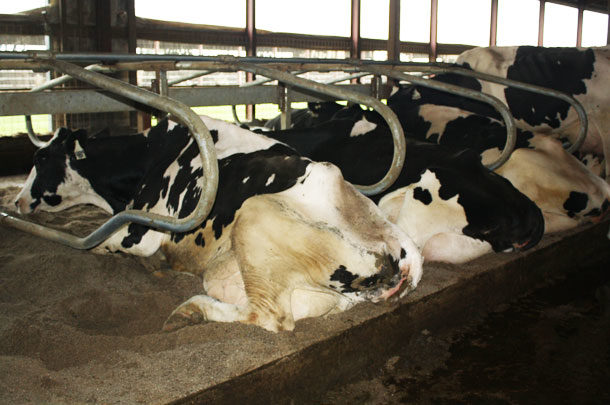As an evaluation specialist for the National Dairy FARM (Farmers Assuring Responsible Management) Program, Tim Raasch provides second-party verifications on dairy farms, where he ensures that high levels of animal care and quality assurance are being provided.
Raasch knows a thing or two about dairy animal well-being. Over the past five years, he has traveled coast-to-coast, evaluating more than 750 dairies in California, Pennsylvania, North Dakota, South Dakota, Iowa, northern Nebraska and Minnesota. These herds range in size from just nine to as many as 8,000 milking cows.
As part of the evaluation, Raasch determines a hygiene score, which serves as a reflection of the animals’ cleanliness. Read on to find out what he looks for and what you can do to improve hygiene scores and keep your cows and youngstock clean.

Tim Raasch
FARM evaluation specialist
Land O’Lakes
Q: Why do hygiene scores matter?
RAASCH: The reasons hygiene scores matter are as follows: disease control, odor and dust control, pest and parasite harborage, milk quality and the visual effect for our customers. It is important not to just look at bacteria and somatic cell counts when scoring hygiene. Milking time and parlor throughput suffer with dirty cows. The dry cow and heifer lots are two of the biggest culprits and are very important to maintain.
Q: Winter weather can challenge dairy producers with a range of conditions, from freezing cold to damp and muddy. What can you do to keep animals clean in cold, wet weather?
RAASCH: Keeping livestock clean is not impossible. It can be a real challenge in the winter and spring. Rain on the corrals in the West. Snow, mud and ice in the northern regions. Bedding outside lots is very important, even though it is costly and labor intensive. Lot maintenance is key, and keeping the bedding fresh and corrals scraped is critical.
The four items we score for a FARM evaluation are relevant all year. Winter and spring definitely bring the lowest scores for hygiene, and it’s important to rotate the seasons of the evaluations to get a true picture.
Q: What are the key areas you are looking for when accessing a hygiene score?
RAASCH: I really focus on the milking herd, as that has the biggest impact on milk quality. Number two on the list is the maternity pen and hospital pen. Those two usually provide a really good window on the total dairy operation. How we treat the calves and the sick cows gives us an indication of total hygiene management on the dairy. PD
Want to learn how to perform a hygiene score evaluation on your dairy? Watch National Dairy FARM’s step-by-step video.






